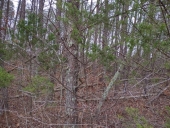















Peter Ellis wrote:You could expect to come back to chaos

While you might be able to get quite a few trees in the ground in that time,the young food forest does actually require some care.
Not even Mark Shepard plants in two weeks then walks away for two years.




 1
1




Idle dreamer
 1
1




Seeking a long-term partner to establish forest garden. Keen to find that person and happy to just make some friends. http://www.permies.com/t/50938/singles/Male-Edinburgh-Scotland-seeks-soulmate




Aaron O'Sullivan wrote:I was thinking of buying some land overseas in ireland and im wondering if two weeks would be enough to get a food forest rolling. obviously it wouldn't be as efficient as other peoples since i won't be able to micromanage the growth and look after it in the young stages. But if i spent 2 weeks preparing the soil, planting all the plants i wanted. Leave it and come back in 2-3 years what should i expect to return to?
the land would be about 1 acre or less to start with
















Rose Pinder wrote:Kind of an interesting design question though. If the timing (2 weeks set up, 2 years left alone) is a design limit, how could that work?
I agree looking at the existing site, plants, climate would be crucial, and also what other resources are available to deal with the lack of attention (eg paying someone to come in and chop and drop twice a year).
Forests go from bare ground to climax without human intervention, so isn't it more about what can be done within the design limitations?




Aaron O'Sullivan wrote:
Rose Pinder wrote:Kind of an interesting design question though. If the timing (2 weeks set up, 2 years left alone) is a design limit, how could that work?
I agree looking at the existing site, plants, climate would be crucial, and also what other resources are available to deal with the lack of attention (eg paying someone to come in and chop and drop twice a year).
Forests go from bare ground to climax without human intervention, so isn't it more about what can be done within the design limitations?
The land is pastureland. not sure what type of grass. I thought that if i tilled all the grass under and then planted in tree's with strong cover crops and annuals that they would propagate year after year and so kill out any "weeds". Aswell as planting perennials such as sunchokes




Aaron O'Sullivan wrote:The land is pastureland. not sure what type of grass. I thought that if i tilled all the grass under and then planted in tree's with strong cover crops and annuals that they would propagate year after year and so kill out any "weeds". Aswell as planting perennials such as sunchokes




Zach Muller wrote:Given the constraints of 2 weeks and 2 years i dont think you would come back to find a forest garden. But I know from experience that certain trees can establish themselves with no care. If you came back to the land in two years i bet you could find a few very hardy members that competed and got above the ground cover.
I had a small plot i did this with. There were baby pecans, baby mulberry and a small hawthorn that survived the lambquarter, chinese sumac, broomsedge, trumpet vine, mornining glory, and johnson grass onslaught. It was not pretty, and from that point it took some high energy work to get back to even being able to walk around in. But still those few useful trees did get established. I would never consider putting plants that cost any money into this scenario.
I also found that giant chard was able to compete as it was a wet season and it was started with mulch around it, before everything was left to take over.






Neil Layton wrote:First, you still don't have the time to do the job in the space of a fortnight.
 3
3




Aaron O'Sullivan wrote:
The land is pastureland. not sure what type of grass. I thought that if i tilled all the grass under and then planted in tree's with strong cover crops and annuals that they would propagate year after year and so kill out any "weeds". Aswell as planting perennials such as sunchokes
 , I would crimp the remainder of the pasture and broadcast something like field peas - a nitrogen fixer capable of producing significant biomass and with potential for reseeding itself - but I would put that out as a throwaway, not relying on it to succeed.
, I would crimp the remainder of the pasture and broadcast something like field peas - a nitrogen fixer capable of producing significant biomass and with potential for reseeding itself - but I would put that out as a throwaway, not relying on it to succeed.










"People may doubt what you say, but they will believe what you do."




Todd Parr wrote:Don't plow, plant a metric shit-ton of autumn olive cuttings and let it go.
Seeking a long-term partner to establish forest garden. Keen to find that person and happy to just make some friends. http://www.permies.com/t/50938/singles/Male-Edinburgh-Scotland-seeks-soulmate




"People may doubt what you say, but they will believe what you do."




 1
1




ecwear.com: Clothes for diaper-free babies
I blog at gardenasnature.wordpress.com

|
cat heaven has trees that produce tuna and tiny ads
The Humble Soapnut - A Guide to the Laundry Detergent that Grows on Trees ebook by Kathryn Ossing
https://permies.com/t/239101/Humble-Soapnut-Guide-Laundry-Detergent
|



